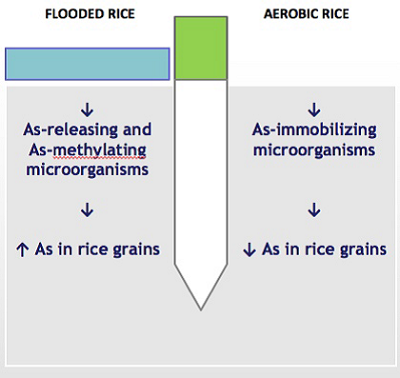
Sarah Zecchin
University of Milan, Italy
Title: Arsenic contamination of rice in relation to agronomic managements: the role of rhizosphere bacteria
Biography
Biography: Sarah Zecchin
Abstract
Rice is one of the crops with highest levels of arsenic (As) contamination. Italy, the first European rice producer, is affected by this health issue. The European commission recently established specific limits for As content in rice grain (Commission regulation (EU) 2005/1006). Continuous flooding, commonly employed in rice cultivation, has been identified as the main factor inducing high solubilisation of As from soil minerals and consequent uptake by the plant. Microorganisms influence As biogeochemistry both directly, by converting different oxidation states of the metalloid or by methylation, and indirectly, acting on As containing soil minerals. Since little is known on the actual role of rhizosphere microorganisms in driving As contamination in rice, our work aimed at deciphering how water managements influence the development of bacterial populations involved in the biogeochemical cycle of As, thus determining As contamination of rice grain. High throughput sequencing, PCR-based as well as microscopy methods were applied to study the microbial communities inhabiting different rhizosphere compartments of rice. We demonstrated that under continuous flooding, iron-reducing and sulfur-oxidizing bacteria emerged, explaining As solubilization from iron- and sulfide-containing minerals. Moreover, As-methylating bacteria were enhanced, resulting in organic As accumulation in rice grains. On the other hand, As- and iron oxidizing bacteria were enhanced in limited water usage condition (aerobic rice), where rice grains contained negligible As concentration. In this study, a direct involvement of specific rhizosphere microbial populations in determining As fate in rice paddy soil was assessed. Agronomic practices promoting beneficial rhizosphere population should be further refined in order to achieve the safety requirements for rice grain production.

Figure 1 Effect of two different water regimes (continuous flooding and aerobic rice) on rhizospheric microbial populations and on As content in rice grains.

